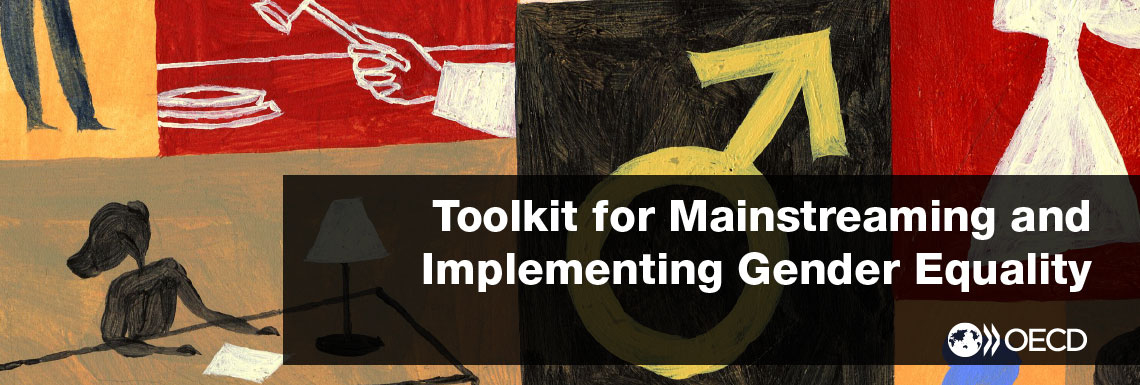Parliamentary gender mainstreaming mechanisms are created and empowered
SELF-ASSESSMENT QUESTION
- To what extent are existing gender mainstreaming mechanisms resourced to undertake their mandate?
WHY IS IT IMPORTANT?
Many parliaments have established committees, sub-committees or multi-portfolio committees to address gender equality concerns, with mandates clearly spelled out in rules of procedures, statutes, or other procedural documents. Properly mandated committees are not only responsible for drafting or amending gender equality laws, but are also empowered to scrutinise all governmental policy and legislation from a gender perspective, to ensure that all laws abide by international gender equality commitments and are aligned with national policies. Importantly, this should include a mandate to review and amend budget bills.
There are a range of other gender equality mechanisms that parliaments can support financially and/or in-kind to promote gender mainstreaming and gender equality. These include: formal or informal cross-party women’s caucuses, clubs or networks, gender divisions or departments within the parliamentary secretariat, and gender or women’s research centres. While few informal or cross-party mechanisms enjoy the power to initiate legislation like their formal committee counterparts, they can be given powers to scrutinise legislation, particularly where formal gender committees do not exist.
ACTIONS TO CONSIDER
- Clearly specifying roles, responsibilities and powers of gender equality mechanisms in rules of procedure or statutes;
- Empowering gender bodies to scrutinise budget plans, laws and policies;
- Equip parliamentary bodies with sufficient resources such as people, budgets, access to experts and expertise, and time to deliberate;
- Providing other types of support, such as staff, work rooms and access to communications resources;
- Recognizing and supporting informal gender mechanisms such as caucuses.
PITFALLS TO AVOID
- Positioning gender mainstreaming work as an ‘add-on’ or voluntary activity;
- Unequal access to parliamentary resources;
- Limited oversight powers of gender bodies;
- insufficient powers of parliamentary gender bodies to review and amend budget bills;
- Limited enforcement of the oversight powers of parliamentary gender bodies;
- Scheduling important votes or activities at the same time that gender bodies such as committees or caucuses are meeting.
COUNTRY EXAMPLES
Many OECD member countries have established some form of gender equality committees. The majority are multi-functional committees, while the parliaments of Austria, Belgium, Canada, Denmark, France, Mexico, Spain, Turkey and the United Kingdom have established specialised committees that deal specifically with gender equality issues. In Mexico, the Gender Equality Commission of the Chamber of Deputies was established to promote reform on highly gender-sensitive issues – such as violence, health, and political participation – and to encourage state and local governments to adopt public policies on gender equality and equal opportunity. It also lobbies for the approval of budgets that meet the specific needs of Mexican women. Since the Congress' commission came into being, state-level congressional bodies have established similar commissions to promote gender equality at the sub-national level. The Gender Equality Commission of the Chamber of Deputies is also actively campaigning for the use of the budget gender-earmarked through the elaboration of Expenditure Annex for Equality between Women and Men in the Federal Expenditures Budget. The parliaments of Hungary and Portugal have established dedicated sub-committees on gender equality, while gender is addressed in a multi-portfolio committee within the Irish parliament.
Few women’s caucuses in the OECD region enjoy the power to initiate legislation however do exercise powers of scrutiny and input. The Network of Women Members of the Finnish Parliament, for example, enjoys the power to draft amendments (such as to the law on gender equality and law on provision of universal child care); review legislation from a gender perspective; contribute to the development of legislation, as well as the provision of micro-loans to women entrepreneurs; and promote the use of gender budgeting. The Polish Parliamentary Group of Women is formally recognised by the parliament, and has been at the forefront of developing quota legislation as well as supporting the Office of the Government Plenipotentiary for Equal Treatment to lobby the government to sign the Council of Europe’s Convention on Preventing and Combating Violence against Women. In Chile, women’s caucuses and groups in the Senate has played a leading role in the adoption of a new legislation establishing the Ministry of Women and Gender Equality, providing six-month-maternity leave and combatting violence against women.
Even where such mechanisms do not enjoy core parliamentary powers, parliaments can still provide support by ensuring equal access to resources. In Finland, the Network of Women Members of the Finnish Parliament is able to access the resources of the internal research service as well as of the International Unit; has been provided a room to meet, and has been allocated funds by the parliament to cover meetings and events. The Swedish parliament provides the Speakers’ Reference Group on gender with two parliamentary staff members as well as resources earmarked from the parliament’s general budget.
Leadership support and, where possible, direct participation in gender mechanisms can also demonstrate parliamentary support for gender equality. The Swedish Reference Group was purposefully established as a mechanism to be led by the Speaker, whether a man or a woman, to indicate the parliament’s commitment to gender equality and women’s advancement.

